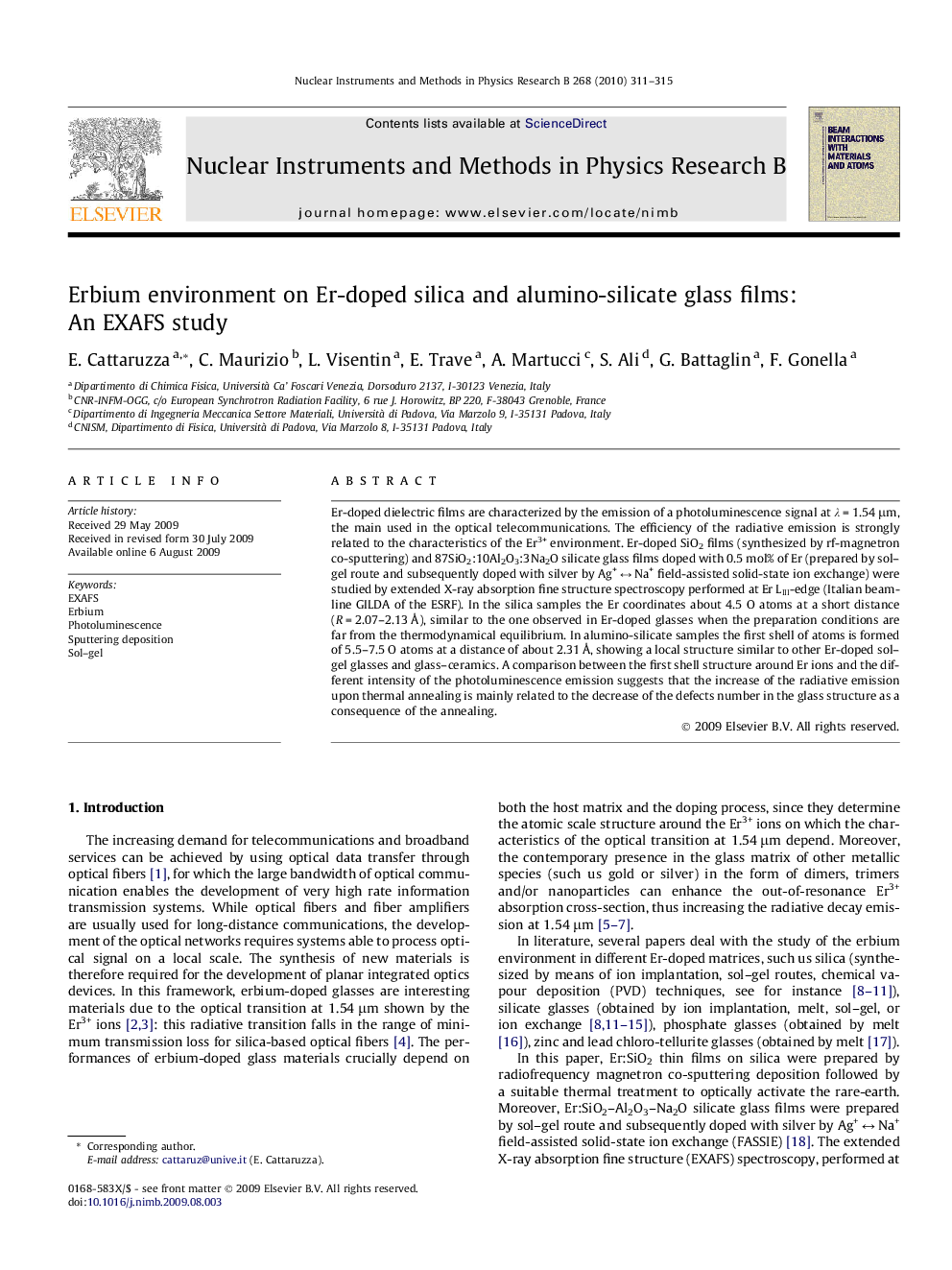| Article ID | Journal | Published Year | Pages | File Type |
|---|---|---|---|---|
| 1683746 | Nuclear Instruments and Methods in Physics Research Section B: Beam Interactions with Materials and Atoms | 2010 | 5 Pages |
Er-doped dielectric films are characterized by the emission of a photoluminescence signal at λ = 1.54 μm, the main used in the optical telecommunications. The efficiency of the radiative emission is strongly related to the characteristics of the Er3+ environment. Er-doped SiO2 films (synthesized by rf-magnetron co-sputtering) and 87SiO2:10Al2O3:3Na2O silicate glass films doped with 0.5 mol% of Er (prepared by sol–gel route and subsequently doped with silver by Ag+ ↔ Na+ field-assisted solid-state ion exchange) were studied by extended X-ray absorption fine structure spectroscopy performed at Er LIII-edge (Italian beamline GILDA of the ESRF). In the silica samples the Er coordinates about 4.5 O atoms at a short distance (R = 2.07–2.13 Å), similar to the one observed in Er-doped glasses when the preparation conditions are far from the thermodynamical equilibrium. In alumino-silicate samples the first shell of atoms is formed of 5.5–7.5 O atoms at a distance of about 2.31 Å, showing a local structure similar to other Er-doped sol–gel glasses and glass–ceramics. A comparison between the first shell structure around Er ions and the different intensity of the photoluminescence emission suggests that the increase of the radiative emission upon thermal annealing is mainly related to the decrease of the defects number in the glass structure as a consequence of the annealing.
